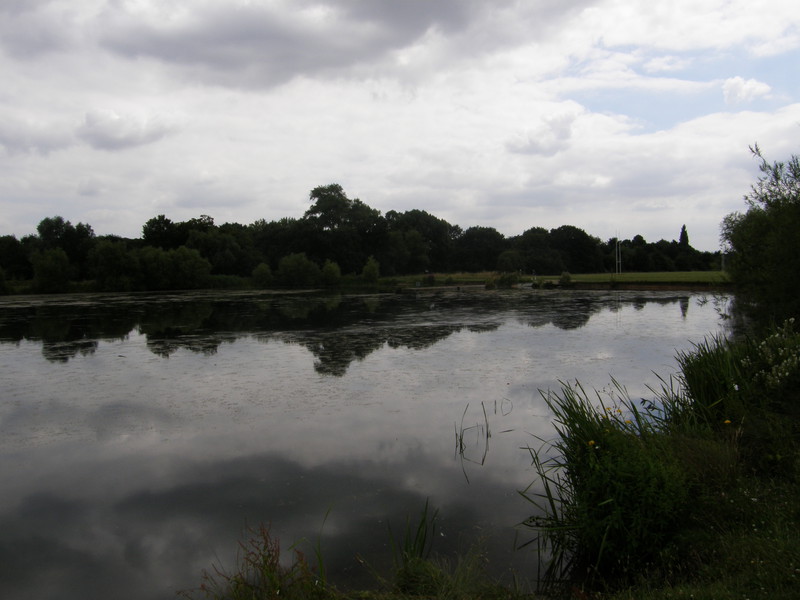
This is a very enjoyable part of the world to walk through. It helps that Epping Forest cuts a huge swathe through the suburbs to the west of the main Central line to Epping, and it also helps that, for the most part, the locals have money to spend on their houses, making the suburbs tidy, attractive and, in some neighbourhoods, impressive.
Having good weather is important out here, too, as this would be quite a trudge in the rain; forests might provide you with shelter, but in continuous rain, they simply concentrate the downpour into large drops that have an uncanny knack of finding the gap between your neck and your collar. Luckily it's been a good day, with some decent sunny intervals poking through the clouds, but it's getting hot and it's getting humid, and it could break out into thunderstorms with a little persuasion. Fingers crossed that it holds off until I get to Epping tomorrow: I've been looking forward to exploring this end of the Central line, and so far it hasn't disappointed.
Leytonstone to Snaresbrook
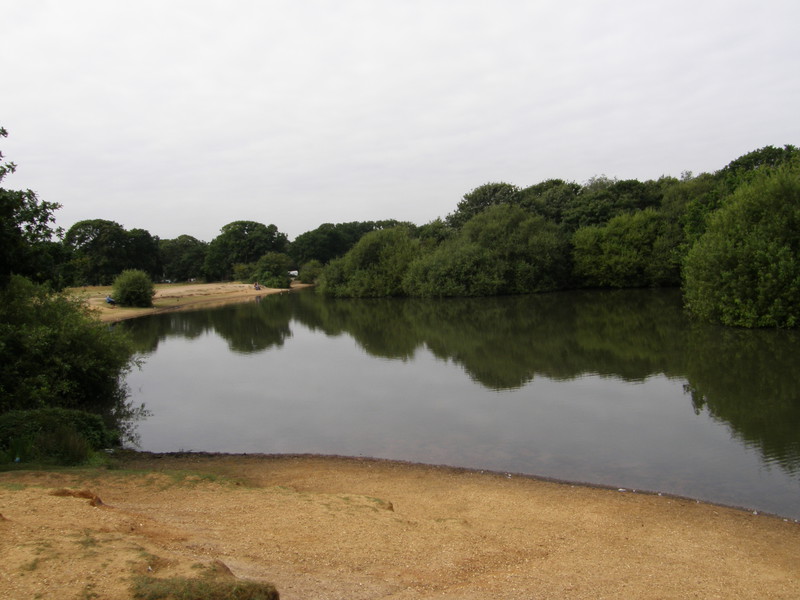
Leytonstone is effectively chopped in half by the thundering A12, and the western half, accessible from the Tube station via an underpass, is somewhat quieter than its vibrant neighbour to the east: this is quiet suburbia rather than a village high street, and the houses are lovely. A large number of the buildings date from the late Victorian era, and there are some delightful terraces and semi-detached houses along the likes of Hainault Road and Forest Glade. The latter road is particularly notable because it runs alongside a small wood; this is one of the southernmost reaches of Epping Forest, which will keep us company on and off all the way to the end of the line.
The highlight of this leg is without doubt the large park to the north of Whipps Cross Road. Also part of Epping Forest, the southern end of the park is mainly scrubland, though the northern half is forest; there's also a large lake, the Hollow Pond, just across the road from Forest Glade. This is delightful walking country, and it's hard to imagine that you're only just in zone 4. Any planes are way up in the sky, there's no discernible traffic noise, and the only criticism is the large amount of litter tangled up in the long grass to the west of the Hollow Pond... but that's just nit-picking, and this little walk sets the scene for the day well.
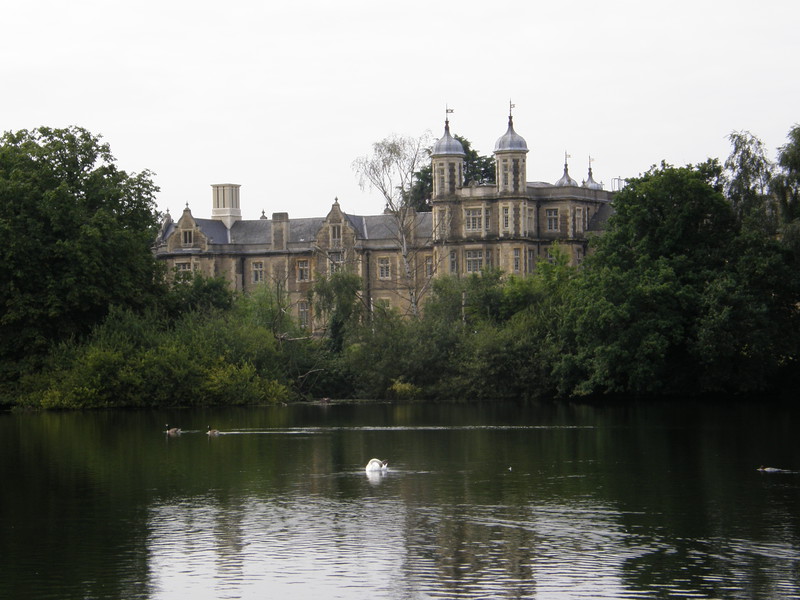
Popping out of the northern end of the park onto Snaresbrook Road, there's the large Eagle Pond to the south of the road with a great view across to Snaresbrook Crown Court. The court building is stunning, especially when all you've got is a tantalising glimpse across Eagle Pond to what looks like a château tucked away in its own private gardens, but this is a working building: two days ago in this very court, Blake Fielder-Civil, the husband of Amy Winehouse, was sentenced to 27 months in prison for assault and perverting the course of justice. Handing out sentences is just the latest phase of this building's long history; designed by Gilbert Scott and William Moffat, it was originally opened in 1843 as an orphanage by King Leopold of Belgium, before being turned into the Royal Wanstead School in 1938.
Snaresbrook station is a short walk from the pond. The station itself is high above the main street, perched at the southern end of the bridge carrying the Central line over the High Street. Originally opened by the Eastern Counties Railway in 1856, the station was partially reconstructed in 1893, but that aside this is a good example of a Victorian train station that has survived largely untouched. The best view of the station is from the footbridge over the high street, which you can access without needing a ticket; it's well worth the detour, and gives you a sense of just how high above Snaresbrook the railway is.
Snaresbrook to South Woodford
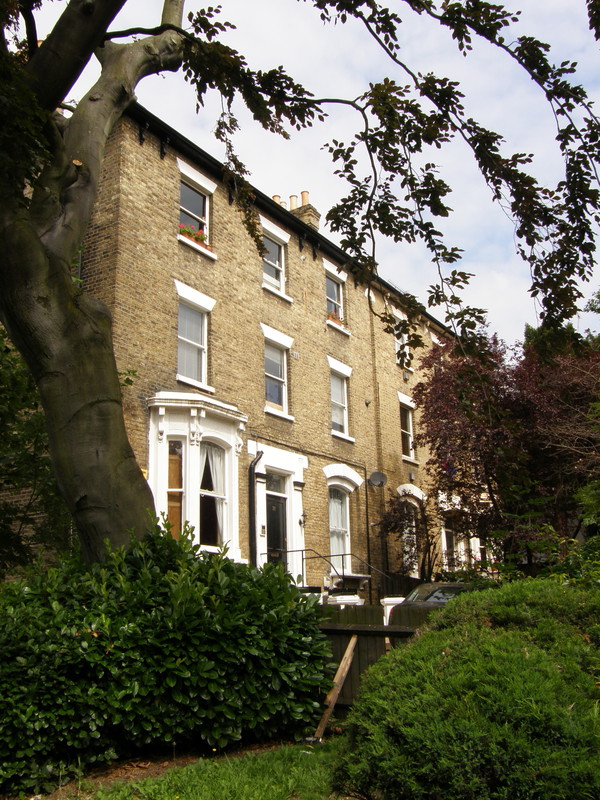
The suburbs of west Leytonstone might be pleasant, but things go up a notch north of Snaresbrook. When planning this route, I tried to avoid walking down too many main roads, as they're normally pretty grim compared to their quieter neighbours, but even along the A113, or Hermon Hill as it's known round here, the houses are great. Whether it's Victorian neo-Georgian terraces that have been converted into flats, semi-detached Mock Tudor or early 20th century detached manor houses, the quality is high. On the eastern side of the road there's an impressive building that looks at first like a church, but it is in fact the Sukkat Shalom Reform Synagogue. Built between 1861 and 1863 by George Somers Clarke, it was originally an orphanage for the children of merchant seamen who died at sea, before becoming part of the Wanstead Hospital complex. It's now listed, and quite right too.
The enjoyable suburbs continue off the main road along Pultenay Road, where Victorian villas rub shoulders with Victorian terracing, though it's all so polished and clean you'd never know it was over a century old. South Woodford station is just round the corner, on a bend in George Lane. When the station opened in 1856 as part of the Eastern Counties Railway branch to Loughton, it was called South Woodford (George Lane), and although the part in brackets was dropped in 1947 when the station was transferred to the Central line, the station signs on the platform inside still say 'South Woodford (George Lane)'. Old habits die hard, I guess.
South Woodford to Woodford
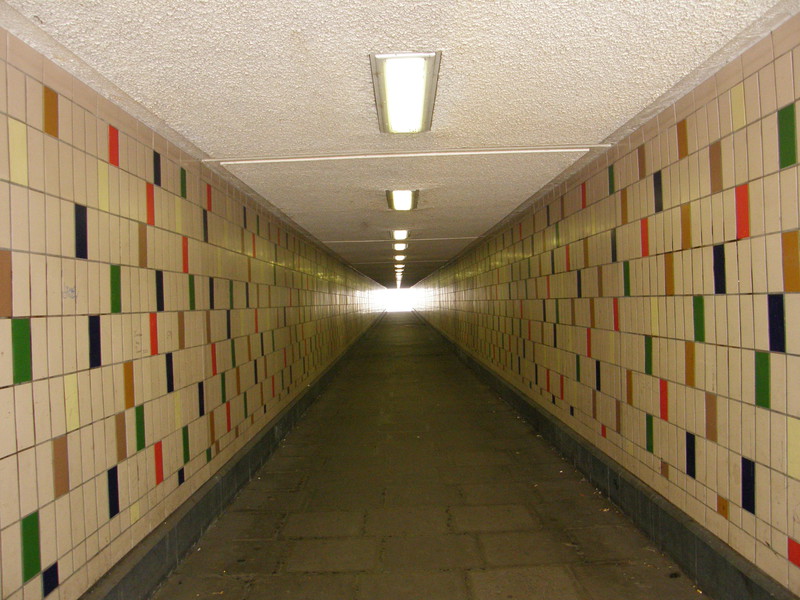
In most of the places where I've crossed the North Circular Road – and that's quite a few – the houses slowly get more and more grotty as they get closer to the constant white noise of the traffic, but this doesn't happen along Mulberry Way. The terraces are lovely at the southern end, and the houses at the northern end, in the shadow of the ramp that takes the North Circular up to Junction 4 of the M11, are just as pleasant. It's unusual, but I'm not complaining; it means that South Woodford really is a quality place.
Things aren't quite as tidy on the other side of the underpass, but the flaking paint of the houses right next to the North Circular is at least consistent with housing along the orbital road in the rest of the capital. Luckily there's an easy escape from the traffic in the form of Elmhurst Gardens, a small green space that's not bad for a quick stop to fill up on muesli bars and water (after all, you've got to keep an eye on fuel levels in heat this oppressive). On the other side of the park, along Gordon Road, the suburbs close in again, but this time there's a lot more modern architecture to be seen, mixed in with the Mock Tudor palaces that are obviously popular round here. The modern blocks aren't ugly as such, but they are uninspiring, looking more like boxes with windows than architecture.
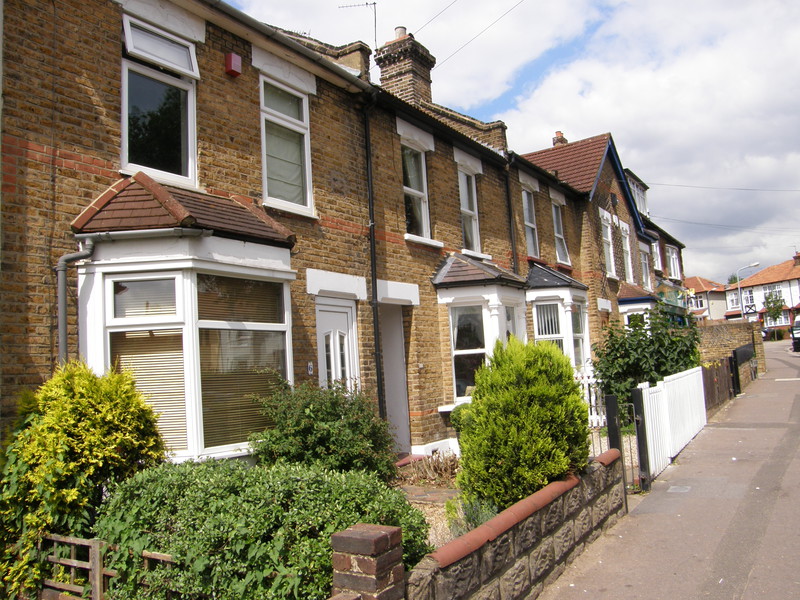
This mix continues on the other side of the Tube track, which you can cross via a hemmed-in bridge (all bridges over Tube lines are meshed off from the outside world, presumably to stop people throwing things at the trains as they shoot past). The variety makes for an interesting walk, even though this is just plain old suburbia; some roads are full of picturesque terraced cottages, some are Mock Tudor heaven, and every now and then you get a modern block that's presumably been put up by someone with a grudge against the locals. Overall, though, I like this part of the world; it's comfortable, it's safe, and it makes for stress-free walking.
Woodford station sits next to The Broadway, the high street through Woodford. Originally opened in 1856, the station became part of the Tube network in 1947 when the eastern Central line extension opened. When it opened, Woodford was the terminus, as electrification of the line only made it this far; passengers had to change here to catch a steam train to get to Epping, until the line was electrified as far as Loughton in 1948, and then Epping in 1949.
Woodford to Buckhurst Hill
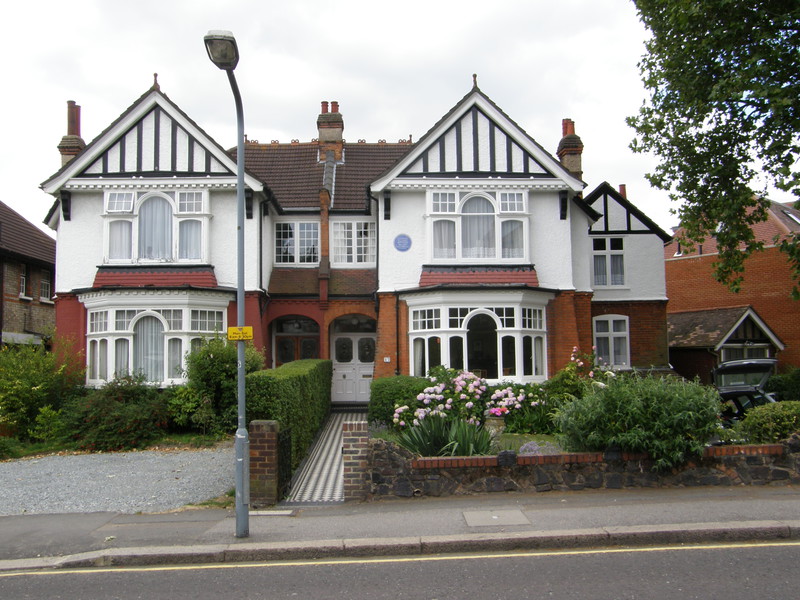
Up to this point, the housing has been steadily improving all the way from Leytonstone (where the housing is pretty lovely already)... and, much to my surprise, it just keeps on getting better. Indeed, this section from Woodford to Buckhurst Hill, through a part of town called Woodford Green, contains some of the most flamboyant housing so far, particularly along the early stretches of Monkham's Avenue, a stone's throw from the station. In the 1920s and 1930s, Clement Atlee lived in Monkham's Avenue, and there's a blue plaque on the classic semi-detached suburban home where he spent his years before becoming Prime Minister from 1945 to 1951. But this is about the only hint of Labour round here, because the local MP is Iain Duncan Smith, leader of the Conservative Party from 2001 to 2003, and Winston Churchill (who lost to Atlee in the 1945 general election) was also MP here, from 1945 to his retirement from politics in 1964.
This conservative approach to life is evident in the architecture, which is particularly decadent along Monkham's Drive, where the houses are large, detached and protected from the road by security gates and pretty gardens. As you move into Princes Avenue, it remains expensive but the houses are a little closer together, and there's quite a bit more Mock Tudor about. This is suburbia at the top of its game, and it's interesting... if you like that kind of thing.
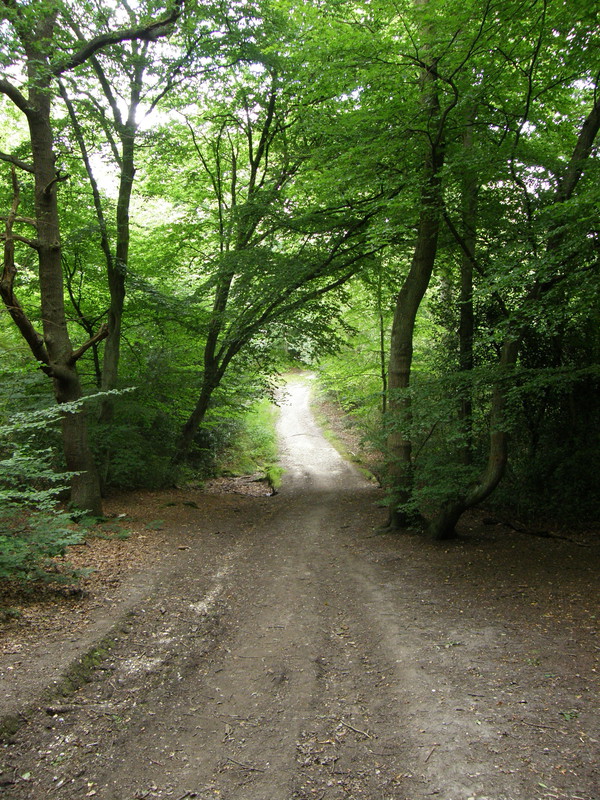
If you don't like that kind of thing, don't panic, because just around the corner sees the return of Epping Forest, and in style. This is Lord's Bushes, and if you enter the forest as Farm Way bends to the right and take the first major junction to the right once you're under the canopy, then you'll find yourself on a forest path that traverses this whole section of Epping Forest, taking you almost to the next Tube station without a break. The walking is delightful and you can't get lost, as there are hardly any other paths in this part of the forest. The trees are thick and you'd be a bit mad to head off-road, but there are a few small open spaces where you can crash out and catch the sun, while the voices of the woodland chirp happily around you. If this is a taste of Epping Forest, I can't wait for the real thing, up towards Epping.
Buckhurst Hill station is along Victoria Road, and it's a pleasant part of the world, feeling more like a small town than part of London. This is, perhaps, because I'm no longer in London; back in Lord's Bushes, when I turned right to head deeper into the woods, I entered Essex. Buckhurst Hill is famous as the residence of Liz Smith, the octogenarian actress who played Nana in The Royle Family and the mad cook Letitia Cropley in The Vicar of Dibley; it's also home to David Waboso, the Director of Engineering at London Underground, but I think fewer people will care about that...
Buckhurst Hill to Loughton
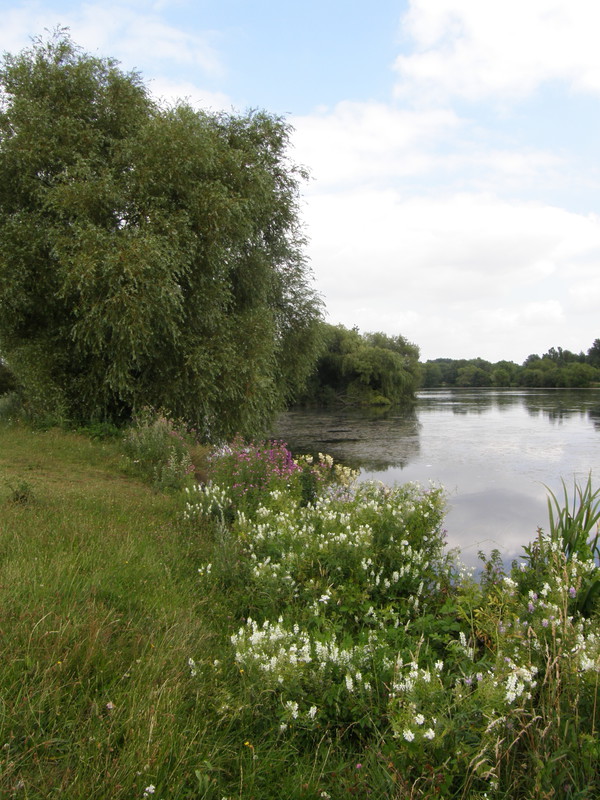
The walk east along Roding Lane is pleasant enough and provides some tantalising views of open countryside ahead, and it isn't long before the houses stop and you turn left into a small park, and then more open countryside. The open sports fields to the east of Loughton form the flood plain of the River Roding, which flows from north to south along the back of the large lake in front of you as you head northeast across the wide expanse. This is a place for Canada geese, swans and copious droppings in the penalty area, and if you didn't have to turn back into Loughton to visit the Tube station, you could continue along the river, pretty much all the way to Debden. The London Loop comes through here on day 13, on the way to Chigwell, just on the other side of the M11, and it's easy to see why.
However, this is a tubewalk, and the next station is back through more suburbia. This time it's Loughton, and although the standard of the houses is clearly a step down from Woodford Green, this is still a nice little area; indeed, Loughton is part of the Golden Triangle, the nickname given to Chigwell, Buckhurst Hill and Loughton in the TV series Essex Wives on account of the affluence and ostentatious manner of some of the locals. The housing nearer to the station, to the west of the large playing fields of Brook County Secondary School, is all pretty cul-de-sacs and modern red brick semis, and there's a public right of way that cuts through the houses all the way to the station, though you have to duck off the path if you want to nosey round the houses.
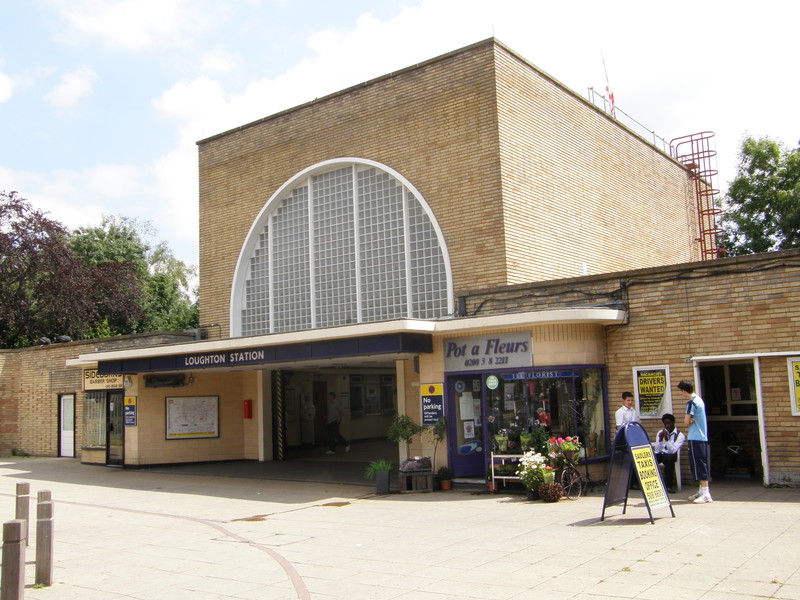
Loughton station is an architectural tour de force, which I wasn't expecting after the pleasant but hardly outstanding station buildings along this part of the Central line. A Grade II-listed building, the current building dates from 1940, though the original Eastern Counties Railway station was opened in 1856. The new station was built in anticipation of the track joining the Central line, and was designed by John Murray Easton for the London and North Eastern Railway, who operated the line before it came under London Underground's control. The main part of the building is a large, square block with a very high ceiling and a huge arched window on the front face, letting light into the ticket hall in the traditional Tube manner. It's all rather attractive, and easily rates as the best station I've yet seen on the eastern Central line.
Loughton to Debden
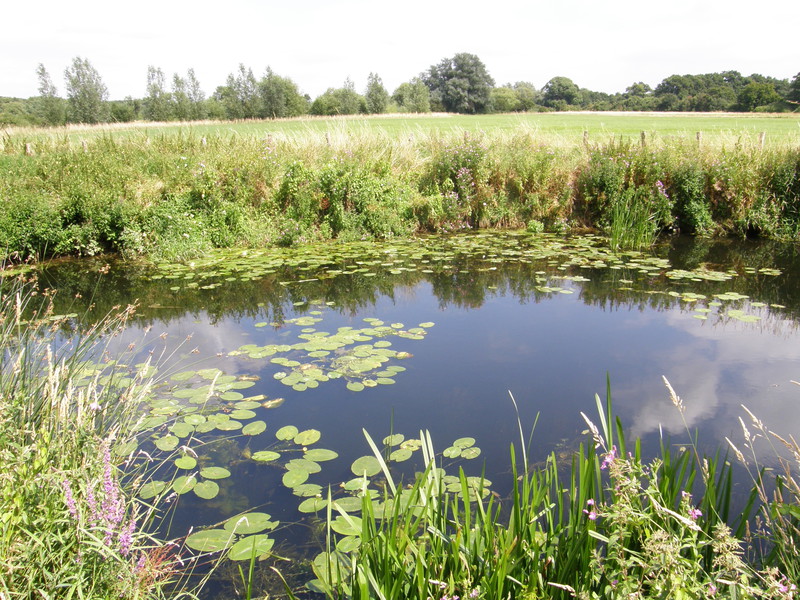
It's a forgettable trudge along Roding Road to the junction with South View Road, where a pleasant little Mock Tudor set of shops gives the busy road junction a slight air of village green, just without the green part. It's much quieter along South View Road, and then it's back into the playing fields I walked through before taking a detour to Loughton station. This time I headed straight for the River Roding, as there's no lake in the way; the river is an absolute delight, and if you've got time to kill, it's worth popping over the small footbridge and having a quick rummage around the nature reserve on the other side.
Following the river is easy, as there's a metalled path all the way along the southern bank, and I suggest you stick to that and enjoy the river views, as the apartment blocks to the north of here are pretty dismal, despite being so close to such lovely countryside; indeed, apart from one high-rise block in Woodford, these were the first unpleasant dwellings I saw all day, and that's pretty good going for Greater London.
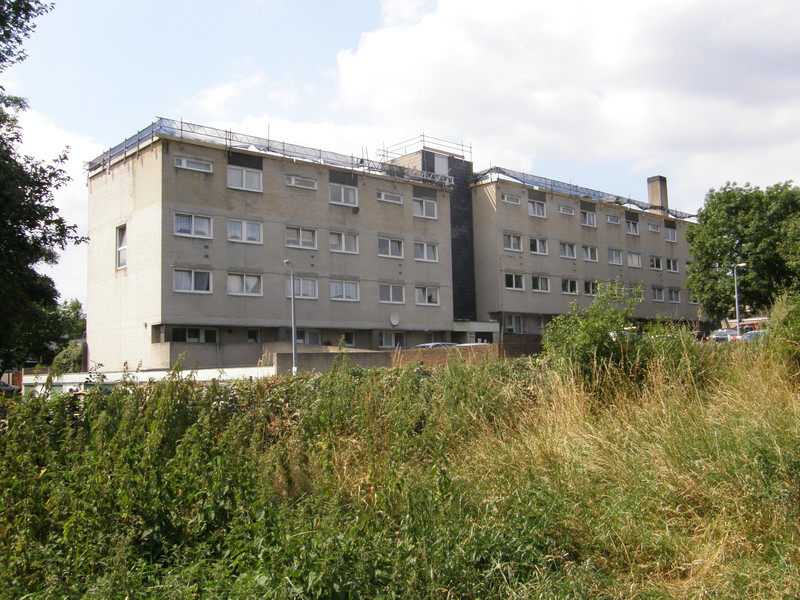
Turning back towards the housing estate, there's a pleasant wooded path that you can take east to Chigwell Lane, with London Loop signs showing you the way (though the London Loop doesn't actually go through here, so I can only assume this is a link section to Debden that isn't shown on my maps). It might sound small, but Chigwell Lane is actually a monster dual carriageway, lined with large, gleaming office blocks that no doubt find it useful to be a stone's throw from the motorway junction just to the south.
Debden station is a short walk away from the motorway, on the right just past the railway bridge (you can take the path just before the bridge and cross the line on a pedestrian bridge if you want to, but that's the long way round). The main station building isn't much to write home about, as it was rebuilt in 1974 and looks like it, but if you look hard you can see some remaining parts of the original 1865 Chigwell Lane station; in particular, the pedestrian bridge over the track to the left of the main entrance is original – a fact that's more obvious from the platforms – and some of the outer buildings are older than they look. Still, it's a station, and it's a long but easy journey back to central London, at the end of this very enjoyable walk through some really lovely landscapes.